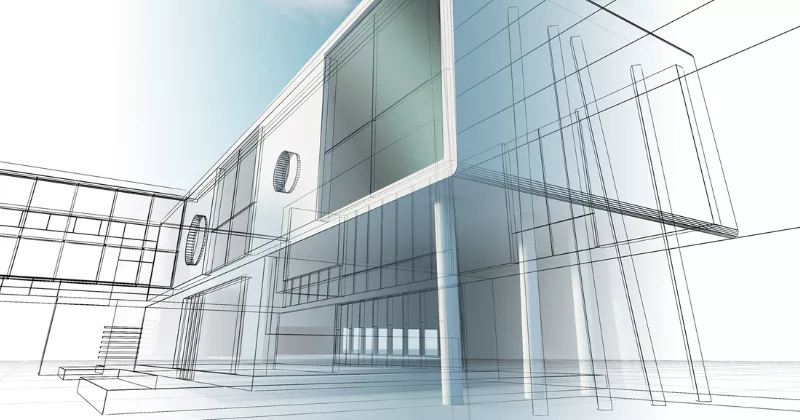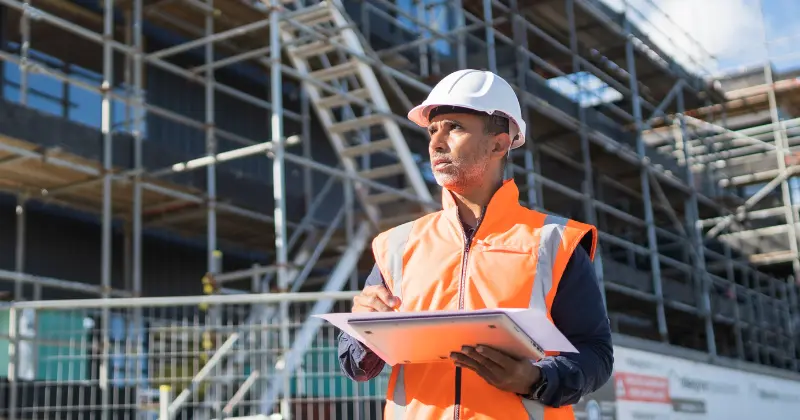11 mins read
What Is an OAC Meeting? Bringing Key Stakeholders to Keep Projects on Track

Owners, architects, and contractors are the key decision makers on nearly all construction projects, so periodic meetings between these stakeholders are essential. Over the years, ground rules and norms have evolved to ensure these meetings add value and build confidence in the project outcome.
In this blog post, we take a closer look at the definition, purpose, and frequency of the OAC construction meeting and the reasons why these discussions have become an essential component of the construction process. We also review some frequently asked questions on this topic to gain more insight into meeting expectations and best practices.
Let’s dive in!
Key Takeaways
- OAC meaning: OAC stands for “Owner-Architect-Contractor,” in keeping with the three key participants of periodic construction project status meetings.
- OAC meetings provide a convenient opportunity to review jobsite logistics, change orders, and RFIs in real-time with the benefit of cross-functional participation.
- Collaboration, preparation, and transparency are emphasized to ensure meetings add value and important topics and risks are addressed.
- Weekly and bi-weekly meeting cadences are common, but the meeting frequency should also be based on the number and urgency of topics to be addressed.
- Construction software is a valuable tool that can be used to prepare for, document, and facilitate regular leadership forums and track actions through completion.
What Is OAC?
OAC is an acronym for “Owner-Architect-Contractor,” which summarizes the three key players in construction projects, and the mandatory attendees of periodic leadership meetings. Depending on the project size and complexity, these roles might be filled by a large organization or just a single individual. In general, the following parties attend OAC construction meetings:
- Owners: The client or project owner is an essential meeting participant, since their buy-in is needed for decisions related to the budget, project scope, and design preferences.
- Architects: The involvement of engineers and construction architects does not end when the drawing package is approved. Their ongoing input is needed to answer RFIs, clarify design elements, and ensure project results align with their vision.
- Contractors: The project general contractor is responsible for completing day-to-day tasks and bringing any new risks or obstacles to the attention of the other project leaders. Contractors typically facilitate the meeting.
What is an OAC Meeting?
An OAC construction meeting is a periodic forum for the three primary stakeholders to review progress, budget considerations, design intentions, and other essential project issues and decisions. These meetings may be conducted either virtually or in person.
Owners, architects, and contractors are already involved in most major project issues, but having pre-scheduled meetings on the calendar ensures these issues are discussed openly, with decisions and other details captured in minutes to clarify the project direction for other stakeholders. Collaboration and transparency are emphasized to ensure all attendees are actively engaged.
The meeting cadence should begin as soon as the general contractor is selected, and continue throughout the project lifecycle. While the architect is typically the central player during preconstruction, the focus shifts to the general contractor during the build. Additional meeting attendees might include the construction foreman, engineer, superintendent, and relevant consultants and specialists.
OAC Meeting FAQs
Those who have participated in these cross-functional forums already understand the importance, but new questions and suggestions continue to emerge. Interested parties outside the industry seek to understand this essential process, while construction teams attempt to maximize the value of their meetings.
What is the purpose of an OAC construction meeting?
The primary purpose of the meeting is to provide a regular opportunity for open communication and collaboration among the leaders of the project team. This forum ensures decision makers are fully informed and any risks to the budget, quality, or completion date are mitigated quickly. The meetings also help to promote teamwork and ongoing alignment on goals.
Depending on the project phase and pending deliverables, the OAC meeting can also be useful for reviewing tasks and topics such as jobsite logistics, material procurement, RFIs, and change orders in real-time. It is also advisable to include jobsite safety as a regular discussion item to cover training compliance, accident reports, and safety inspection results.
What is the frequency of an OAC construction meeting?
The meeting time and frequency should be established by the collective team, with a pace that is sufficient for the ongoing progress but does not overburden participants. While bi-weekly and weekly recurrences are typical, some teams may choose to meet more or less frequently or adjust the cadence to accommodate busy project phases.
The time and date selected for periodic meetings can be as important as the frequency. For example, early Monday meetings may not provide participants with sufficient time to prepare, while Friday afternoon gatherings may suffer from a lack of interest or participation. Both the time and frequency should be selected based on ongoing availability and alignment with other scheduled tasks.
What is discussed in an OAC meeting?
The contractor typically creates an agenda for each new meeting and distributes it to other attendees in advance, allowing them to prepare to answer questions or provide necessary input. The agenda should include the most important issues to be addressed, while allowing time for open discussion, change approvals, and submittal reviews. The topics are likely to change with each meeting, but some important subjects that should always be reviewed include:
- Current project status compared to the budget and schedule, as well as any unforeseen circumstances that may create delays or overruns.
- Jobsite safety and a review of any recent occupational safety and health (OSH) concerns that have been brought to the attention of attendees.
- Important resource constraints related to subcontractors, materials, or equipment.
In earlier project phases, discussion topics might also include design adjustments, site reviews, environmental concerns, and the integration of green construction practices.
What are the risks of skipping the OAC meeting?
The value of these discussions quickly erodes when attendees are unavailable, unprepared, or do not use the time constructively. Absences by any of the three key players can create communication gaps, since important information and decisions may not be filtered down to the various project teams effectively. This applies to quality decisions and RFI responses as well as scope changes and project phase closure approvals. In some cases, the contractor is legally obligated to facilitate meetings and report on OAC discussions, so skipping or postponing the meeting regularly could even lead to disruptive disputes.
What are the OAC meeting best practices?
Preparation and follow-through are essential elements of any successful meeting, and OAC discussions are no exception. Basic meeting etiquette and best practices help to justify the time and effort expended by the project leaders:
Create an agenda
The agenda acts as a roadmap to ensure all important subjects are covered, and critical issues are discussed within the agreed-upon time. Prioritizing the agenda based on the criticality of the issues is a good way to balance time constraints vs project needs. Further, distributing the agenda in advance allows all attendees to prepare for the meeting.
Publish minutes
Minutes are intended to capture all key decisions and discussion points so they can be recorded and provided to other stakeholders. Action items, including responsible parties and realistic due dates, help to establish accountability. These items can also be a convenient starting point for the next scheduled meeting.
Prepare in advance
While the contractor typically facilitates and schedules the meetings, all participants should prepare themselves by pre-reading the agenda, gathering any relevant documents, construction drawings, and records, and reviewing the latest project status and key performance indicators (KPIs).
Utilize software tools
3D modeling, videoconferencing tools, and construction software solutions for planning, procurement, cost management, and document control are among the many software options available to improve communication and collaboration before, during, and after the meeting.
Conclusion
General contractors, architects, and owners must work through a never-ending stream of questions, decisions, and actions to safeguard project success. Bringing these key players together to review project priorities and status updates presents an opportunity to eliminate delays and streamline communication channels throughout the project lifespan. Construction software is the key to ensuring the value of OAC meetings outweighs the time and effort.
RIB Software offers a toolkit of purpose-built solutions for scheduling, estimating, document management, commissioning & handover, and other essential functions that keep project leaders aligned and establish a repository for important decisions and action items. Customized workflows, checklists, and templates support the unique needs of each construction company and project.
To learn more about how RIB Software can dramatically improve your OAC construction meeting efficiency and results, book a demo today and unlock the transformative power of digital solutions!
Book a Free Demo for RIB Software
Most Recent
11 mins read
10 mins read
29 mins read
27 mins read
Blog Categories

Ebook











